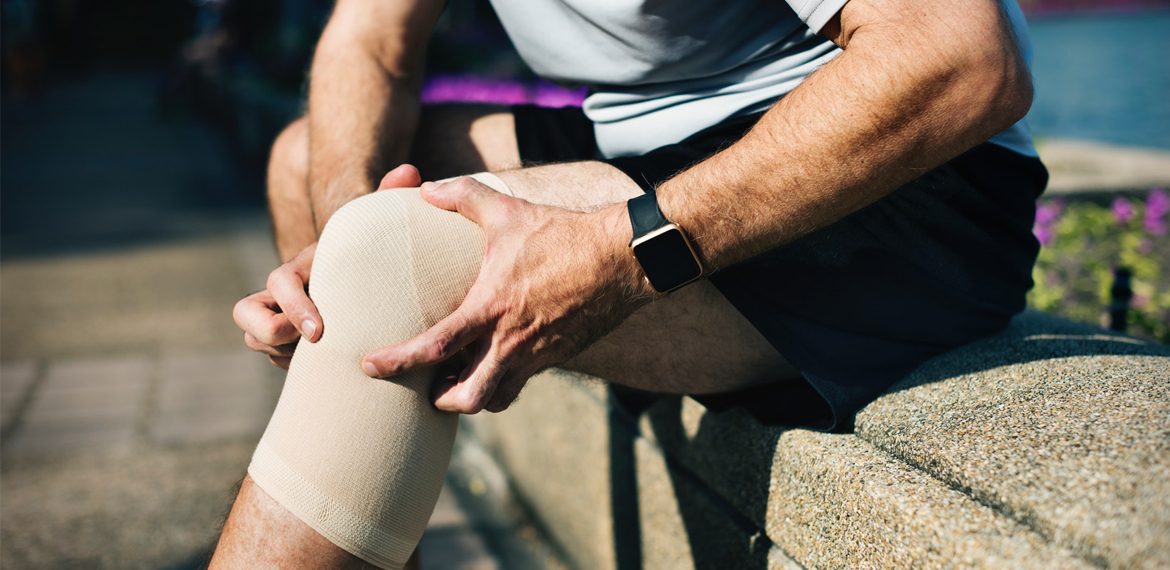 Jul
18
Jul
18
Choosing the right knee brace
- July 18, 2019
- 0 Comment(s)
Choosing the right knee brace can be daunting. Open or closed patella, type, tightness are some of the factors that need to be considered. Here’s all you need to know so that you are comfortable purchasing the right knee support.
When should I wear a knee brace?
Rule of thumb, braces should be worn if there’s knee pain or instability in the joint. Mainly for contact or weight bearing sports where there’s likelihood of an injury. A knee brace can also be used for rehabilitation for knee injuries such as ACL tears. The knee brace will provide support by limiting the movement of the joint, whilst allowing the knee to have motion.
A knee brace for arthritis can also provide pain relief and reduce inflammation. Please consult a healthcare professional to help you decide if a brace is necessary for this condition.
What levels of protection does a knee brace provide?
Knee braces usually are measured in 3 levels of protection 1 to 3+.
A level 1 brace offers the least protection but usually is the most flexible. Knee sleeves are level 1 braces that provide the flexibility of full range movement of the knee joint. These are perfect for sports or competition weight lifting where mobility is key. Knee sleeves are best for pain relief, knee compression that provides moderate support and keeping heat in the knee joint.
Level 2 braces are usually wrap around braces where they are much like a knee sleeve but have straps that wrap around the knee to provide increased stability. These knee supports provide the user a good range of movement and increased stability.
More serious knee braces such as the hinged types are deemed to be level 3 braces. These provide the maximum stability with limited range of movement in the knee joint. This type of braces is generally heavier and is best used to recover from surgery.
3+ support knee braces provides maximum protection to the knee joint and is used for post op. Amongst the heaviest and most restrictive braces around, they aid in pain relief and support for moderate to major instability conditions.
Types of knee braces
There’s a wide array of knee braces to choose from such as knee sleeves, knee wraparound, patella straps, ACL brace to name a few. To help you decide we have broken down the most popular types below.
Knee Sleeve
Knee sleeves come in different lengths and thicknesses and slip right over your knee. They provide knee compression and trap heat within the knee joint which helps control swelling and pain. For additional knee support for weightlifting look to size your knee brace one size down and choose the one that isn’t as long. This will give you more comfortable range of motion on exercises such as the squat.
View our KNEE SLEEVE range.
Wraparound Knee Brace
More common to athletes, the wraparound knee brace provide moderate stability and pain relief. These supports are easy to take on and off and are not mobility inhibiting. Perfect for sports that require sharp changes in direction such as basketball or soccer.
View our WRAPAROUND knee brace range.
Hinged Knee Brace
Hinged knee braces provide a high level of stability for the knee joint. These types of braces are commonly used post surgery to ensure the knee is in proper alignment whilst providing some range of moment. Please consult your doctor to ensure you are selecting the correct brace if you’ve just had surgery.
View our HINGED knee range.
Knee Strap
If you suffer from jumpers or runners knee, medically termed patella tendonitis, knee straps are a great solution. Wearing this type of strap helps minimise knee pain by putting compression on the patella tendon.
View our PATELLA STRAPS.
Closed/Open Patella Braces
Open patella – with hole
Closed Patella – without holes
Braces with open patella allows the knee to track correctly and provides the knee with support also with an added benefit of providing extra support around the knee cap.
Closed patella knee braces provide knee compression with the same pressure all throughout the knee. Where open patella supports provide added support around the knee cap.
What’s the braces ideal tightness around my knee?
When selecting the tightness of a knee brace it generally based on the individual. Having said that, the brace shouldn’t be too loose where no support is provided to the joint. Nor should it be too tight where the brace is uncomfortable.
For sports, the knee brace shouldn’t restrict too much movement or slow you down. However for weightlifting there should be maximum compression; tight fit to ensure the knees are protected.
The correct fitting brace will feel rigid and secure. Ensure you use appropriate size guide to measure your dimensions to choose the correct brace.
Which brace is right for me?
The correct knee depends on the level of support you require or what a health professional recommends. Your decision should be based on the purpose – added stability for sports or recovering from surgery. This will be a good gauge as to how much movement is necessary.
View our full KNEE BRACE range.
